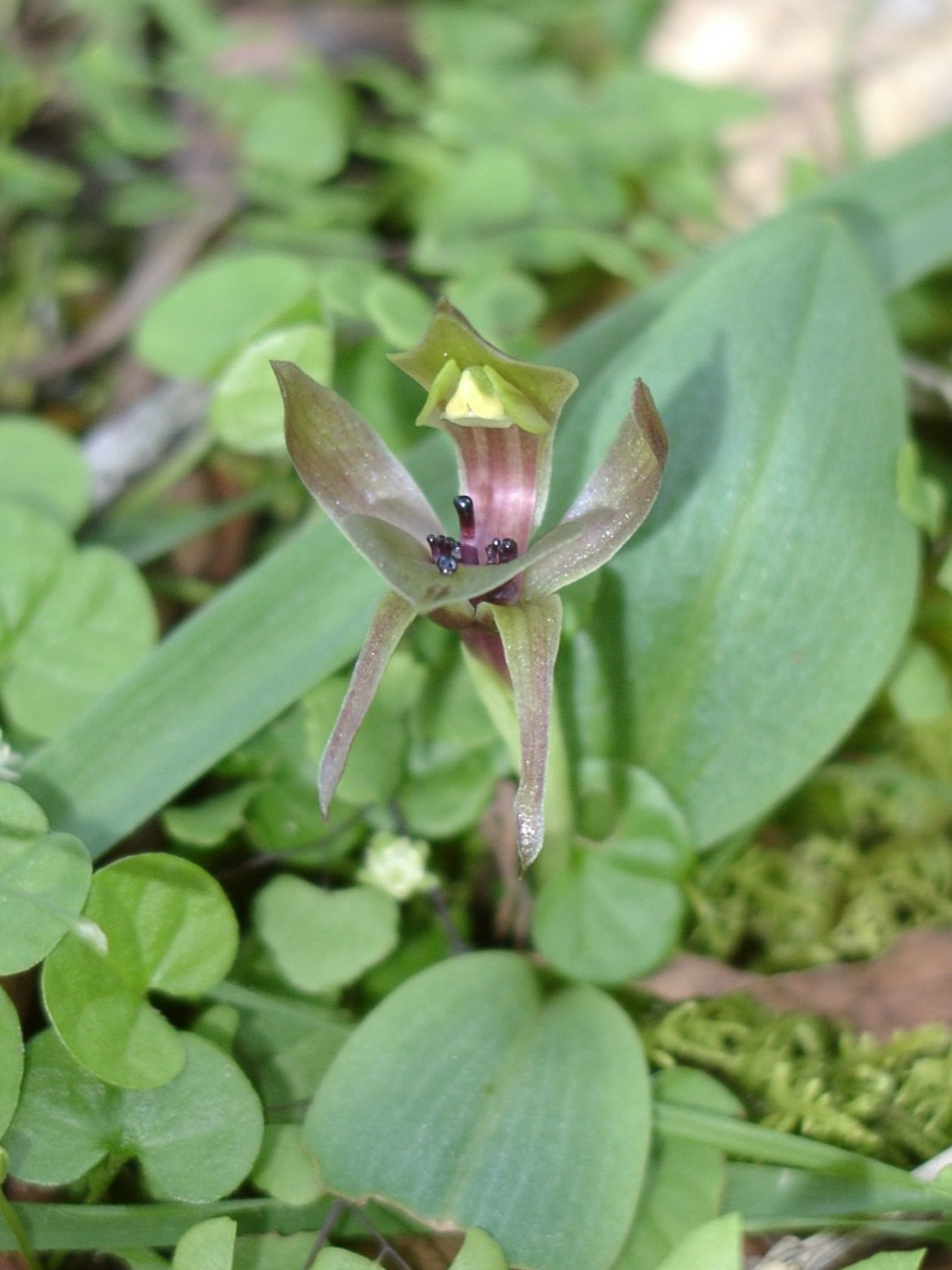
Smiths Gully
Landcare Group

History
Smiths Gully Landcare welcomes you to enjoy the walk along the Smiths Gully to St Andrews Nature Trail. The return walk from the Peter Franke Reserve car park is 3 km and takes 1 to 1.5 hours to complete. The trail follows the Smiths Gully Creek to St Andrews through the Old Caledonia Gully alluvial gold diggings of the 19th-20th century.
The Peter Franke and St Andrews Market Reserves are situated on Smiths Creek in the Old Caledonia Gully. Prior to the arrival of Europeans the Wurundjeri-willam people had, for upwards of 30,000 years camped seasonally on both of these areas.
In 1854 gold was discovered in what is now known as Smiths Gully. The landscape of the region changed dramatically as thousands of miners took up claims. In the process of alluvial mining the course of Smiths Gully Creek has been diverted many times and the structure of the creek bed altered considerably.
Agricultural activities and land settlement have also resulted in a greatly reduced water-flow. Even in drought seasons some water holes remain, however in a flash-flood the old creek is a joy to see... and hear!





Peter Franke Reserve
In 1982, at the request of the Eltham Shire, 2.4 ha of Dept of Conservation Crown Land was classified Smiths Gully Picnic and Nature Reserve. It was named 'Peter Franke Reserve' in memory of the son of a Smiths Gully family.
The Reserve was also the historic site of the Market Square of the gold rush days and the State Battery, gutted in the bushfires of 1962. The Weir now provides emergency water for the Panton Hill and St Andrews CFA fire brigades.
The vegetation you see today is mainly re-growth from the extensive bushfire of 1962, though the original old-growth forest had already been decimated by mining and fire-wood collection for Melbourne. The Peter Franke Reserve, Queenstown Cemetery, Willis Nature Park and adjoining conservation properties tie into the wildlife corridor linking Watsons Creek and Kinglake National Park. Within this habitat there is a rich source of flora and fauna and many of these are rare and endangered species.
The greatest threats today to this historically and environmentally significant region are illegal removal of trees (dead and alive), the invasion of weeds, predation by feral and domestic animals and degradation of waterways.
The gully through which the trail winds is part of the Silurian Age, Anderson Creek formation. The Anticline Syncline geology of the landscape is evident if you look up at the steep hills on the western face of the gully and in the strata of sections of rock formation in the creek-bed. The Devonian Volcanic quartz-diorite plug at The Knobs, St Andrews is the origin of the reef and alluvial gold of the Caledonia diggings.
You will see blackened Eucalyptus, survivors of the 1962 bushfires and some beautiful old growth Candlebark, Manna Gums, Yellow Box and Peppermints along the trail and creek-bed.
Many of these Eucalyptus date from the gold mining days and are old enough to provide suitable nesting hollows for the Parrots, Cockatoos, Kookaburras, Owls and Possums that enliven this catchment.
The disturbed clay from the old gold mining sites have become habitat for wombat warrens and provide nesting tunnels for Spotted Pardalotes. Unfortunately the early diggings also favour the Fox and Rabbit.





Queenstown Cemetery
The first recorded burial in this pioneer cemetery was in 1861. There are over 400 registered burials on this site, many from the early mining days are unrecorded, including a number of Chinese.
The heritage vegetation dates from the 1860s with boundary plantings of Mexican and Italian Cypress. The localised Yuccas, Jonquils, Daffodils and Belladonna Lilies on the grave plots contrast with the background of native trees, grasses and wildflowers in this idylic 1.7 ha bushland reserve.
Smiths Gully Landcare have carried out weed maintenance on this reserve and welcome the Friends and Relations of Queenstown Cemetery.





Conserve our biodiversity
We aim to protect and enhance our environmental biodiversity of our local area by planting local plants, and removing invasive species.
Knowledge sharing
We continue to learn and share our knowledge so we may continue to grow and ready the next generation of environmentalists
Celebrate Cultural, Historic and Biodiversity Significance
We celebrate Cultural, Historic and Biodiversity Significance.
Statement of Purpose
Smiths Gully Landcare aims to conserve Indigenous Flora and Fauna by protecting, enhancing biodiversity values and advocating the protection of our beautiful local Flora and Fauna. We strive to engender a sprit of co-operation between a diversity of land users and encourage sustainable land management practices. We will promote awareness, celebrate and protect areas of cultural, historic and biodiversity significance and embrace knowledge sharing.
